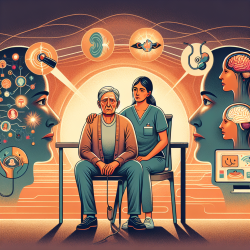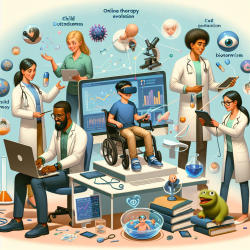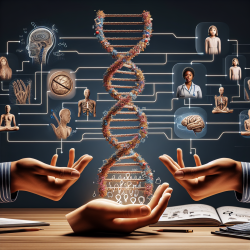Introduction
In the realm of cognitive neuroscience, the intricate dance between music and the brain has long been a subject of fascination. Recent research, such as the comprehensive meta-analysis titled "An ALE meta-analytic review of musical expertise," has shed light on the profound neuroanatomical and functional adaptations associated with musical training. This exploration into the symphony of the brain offers invaluable insights for practitioners seeking to enhance their therapeutic approaches, particularly in the context of child development.
The Power of Musical Expertise
The study conducted by Criscuolo et al. (2022) meticulously analyzed 84 studies, revealing a coherent cortico-subcortical network that musicians develop through long-term training. This network includes enhanced volume and activity in auditory, sensorimotor, interoceptive, and limbic brain areas. Such findings underscore the concept of neuroplasticity—the brain's remarkable ability to reorganize itself by forming new neural connections in response to learning and experience.
Implications for Child Development
For practitioners working with children, these insights are particularly compelling. Musical training not only enhances specific auditory and motor skills but also bolsters broader cognitive functions such as working memory, intelligence, and executive functions. This suggests that integrating musical elements into therapeutic practices could yield significant benefits in cognitive development.
Practical Applications in Therapy
- Enhanced Auditory Processing: Incorporating musical activities can improve children's auditory discrimination and phonological processing, crucial for language development.
- Improved Motor Skills: Engaging in rhythmic and instrumental activities can refine fine motor skills and coordination, supporting tasks like writing and drawing.
- Cognitive Flexibility: Musical training enhances executive functions, aiding in better problem-solving and adaptability in learning environments.
Encouraging Further Research
While the current meta-analysis provides a robust framework, it also highlights the need for further longitudinal studies, especially in children. Understanding how early musical training influences brain development over time could revolutionize therapeutic strategies and educational curricula.
Conclusion
The interplay between music and the brain offers a harmonious pathway to enhancing cognitive development in children. By integrating musical elements into therapeutic practices, practitioners can harness the power of neuroplasticity to create transformative outcomes. As we continue to explore this dynamic field, the potential for music to unlock new possibilities in child development remains an inspiring frontier.
To read the original research paper, please follow this link: An ALE meta-analytic review of musical expertise.










